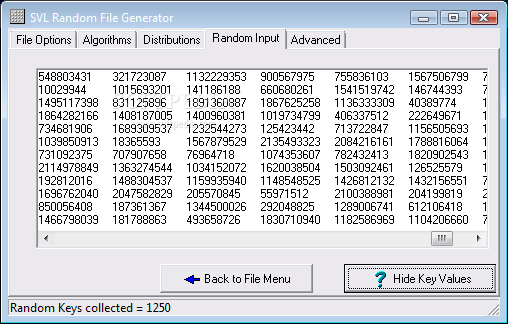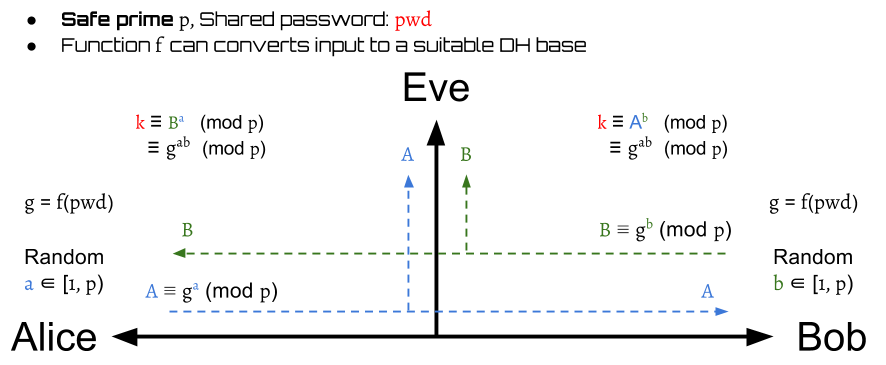Generate A Random Session Key
- Generate A Random Session Key Facebook
- Generate Random Aes Key
- Generate A Random 256 Bit Session Key In Java
GUIDs are used in enterprise software development in C#, Java, and C as database keys, component identifiers, or just about anywhere else a truly unique identifier is required. GUIDs are also used to identify all interfaces and objects in COM programming. $begingroup$ PGP is using a Key Derivation to produce a symmetric session key from a passphrase. It has even two modes, it can genrate a randome symmetric key and wrap this with the derived key from the password or it can use the key derived from the password directly.
Syntax
Parameters
hProv

Handle of a cryptographic service provider (CSP) created by a call toCryptAcquireContext.
dwLen
Number of bytes of random data to be generated.
pbBuffer
Buffer to receive the returned data. This buffer must be at least dwLen bytes in length.
Optionally, the application can fill this buffer with data to use as an auxiliary random seed.
Return value
If the function succeeds, the return value is nonzero (TRUE).
If the function fails, the return value is zero (FALSE). For extended error information, callGetLastError.
The error codes prefaced by 'NTE' are generated by the particular CSP being used. Some possible error codes are listed in the following table.
Digest : 4 # Convert to Base58 encoding codestring = '123456789ABCDEFGHJKLMNPQRSTUVWXYZabcdefghijkmnopqrstuvwxyz' value = int. Is a private key required for sha256 hash generator software. That format is called, and it is pretty handy as it has checksumming built in and employs a charset without confusing characters – exactly like a Bitcoin address.A snippet is worth a thousand words. Actually, the output of the hashing above taken as a 256-bit unsigned number is already the private key, what is commonly called the secret exponent.But we are used to see those pretty private keys beginning with a 5, so let’s see how it is encoded. 1 2 3 4 5 6 7 8 9 10 11# Prepend the 0x80 version/application byte privatekey = b ' x80 ' + privatekey # Append the first 4 bytes of SHA256(SHA256(privatekey)) as a checksum privatekey += sha256 ( sha256 ( privatekey ). From the secret value to a private keyThis is step is trivial.
| Return code | Description |
|---|---|
| One of the parameters specifies a handle that is not valid. |
| One of the parameters contains a value that is not valid. This is most often a pointer that is not valid. |
| The hProv parameter does not contain a valid context handle. |
| The function failed in some unexpected way. |
Remarks
Generate A Random Session Key Facebook
The data produced by this function is cryptographically random. It is far more random than the data generated by the typical random number generator such as the one shipped with your C compiler.
This function is often used to generate random initialization vectors and salt values.
Software random number generators work in fundamentally the same way. They start with a random number, known as the seed, and then use an algorithm to generate a pseudo-random sequence of bits based on it. The most difficult part of this process is to get a seed that is truly random. This is usually based on user input latency, or the jitter from one or more hardware components.
With Microsoft CSPs, CryptGenRandom uses the same random number generator used by other security components. This allows numerous processes to contribute to a system-wide seed. CryptoAPI stores an intermediate random seed with every user. To form the seed for the random number generator, a calling application supplies bits it might have—for instance, mouse or keyboard timing input—that are then combined with both the stored seed and various system data and user data such as the process ID and thread ID, the system clock, the system time, the system counter, memory status, free disk clusters, the hashed user environment block. This result is used to seed the pseudorandom number generator (PRNG). In Windows Vista with Service Pack 1 (SP1) and later, an implementation of the AES counter-mode based PRNG specified in NIST Special Publication 800-90 is used. In Windows Vista, Windows Storage Server 2003, and Windows XP, the PRNG specified in Federal Information Processing Standard (FIPS) 186-2 is used. If an application has access to a good random source, it can fill the pbBuffer buffer with some random data before calling CryptGenRandom. The CSP then uses this data to further randomize its internal seed. It is acceptable to omit the step of initializing the pbBuffer buffer before calling CryptGenRandom.
Examples

Generate Random Aes Key
The following example shows the generation of 8 random bytes. These can be used to create cryptographic keys or for any application that uses random numbers. For an example that includes the complete context for this example, see Example C Program: Duplicating a Session Key.
Requirements
| Minimum supported client | Windows XP [desktop apps only] |
| Minimum supported server | Windows Server 2003 [desktop apps only] |
| Target Platform | Windows |
| Header | wincrypt.h |
| Library | Advapi32.lib |
| DLL | Advapi32.dll |
